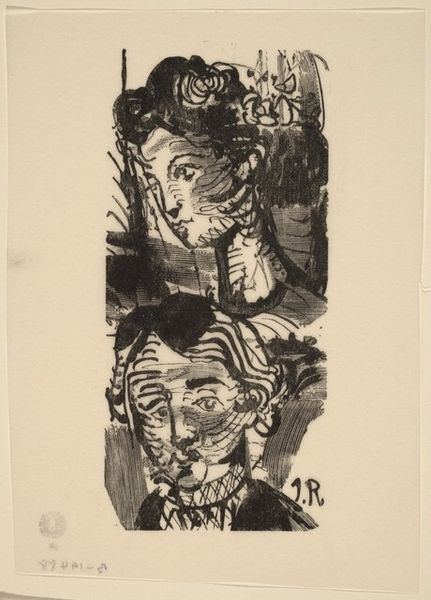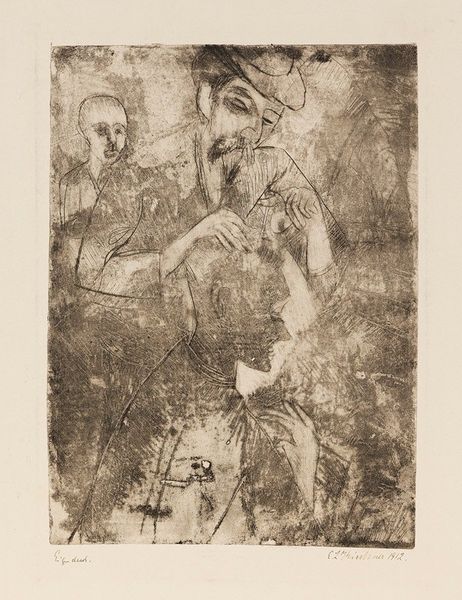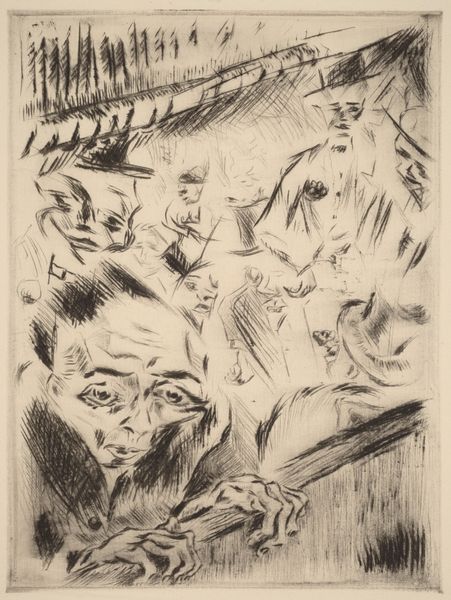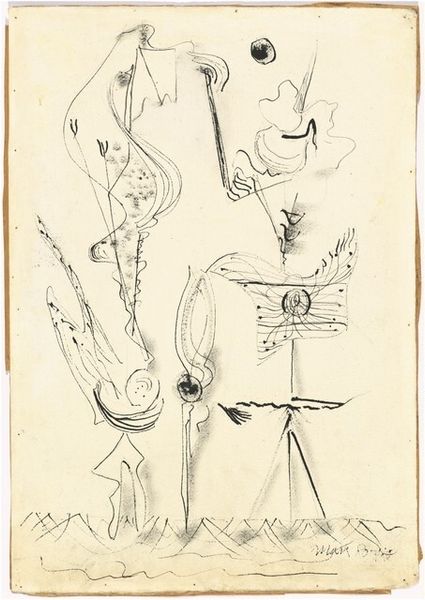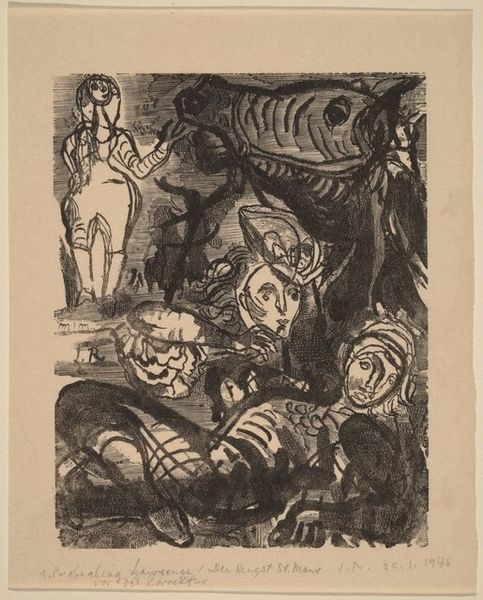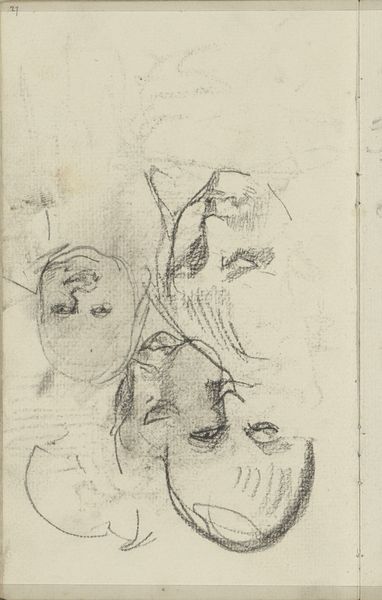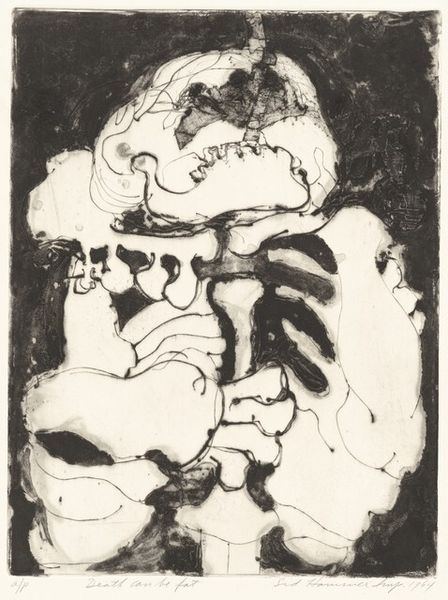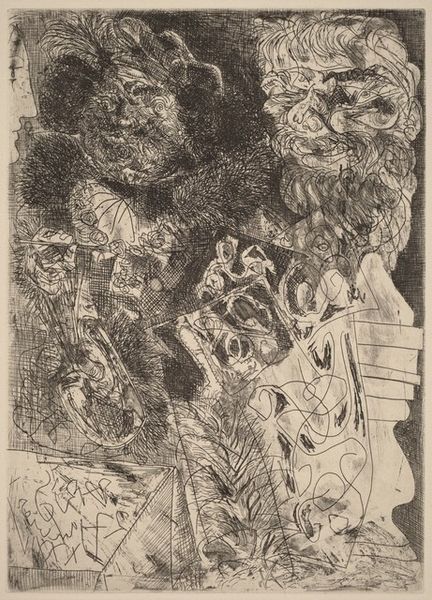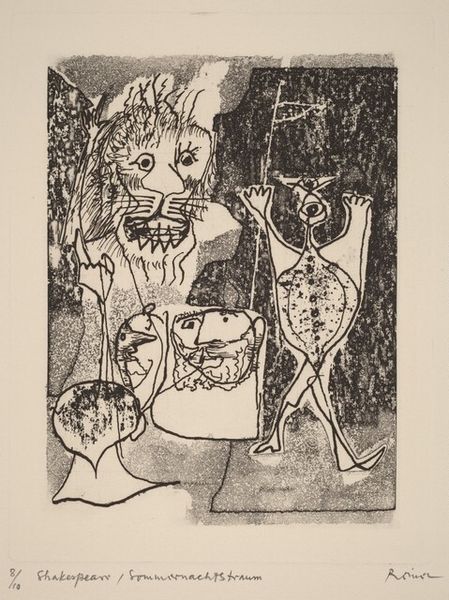
print, etching
#
portrait
# print
#
etching
#
figuration
#
portrait drawing
#
surrealism
Dimensions: image: 260 x 172 mm paper: 315 x 243 mm
Copyright: National Gallery of Art: CC0 1.0
James Blanding Sloan made this etching, "Self Criticism," sometime in the first half of the 20th century. In this surreal composition, Sloan seems to be exploring the psychology of the artist and the agony of wrestling with one's own creative limitations. We see different versions of a single tormented figure arranged in a fantastical landscape. The artist is both a tiny figure walking precariously near a precipice and a giant, looming head in the clouds. It's worth noting that, in Sloan's time, the Freudian psychoanalysis of dreams and the unconscious mind was becoming extremely influential across the art world. This may well have encouraged the artist to give visual form to inner states and psychological dramas. We can look to the historical and cultural contexts of the artist's life to understand his creative output more fully. To do so, one can explore sources such as biographies, exhibition reviews, and the artist's own writings. Only then can we begin to understand the social and institutional forces that shaped not only the artwork itself, but its very meaning.
Comments
No comments
Be the first to comment and join the conversation on the ultimate creative platform.
